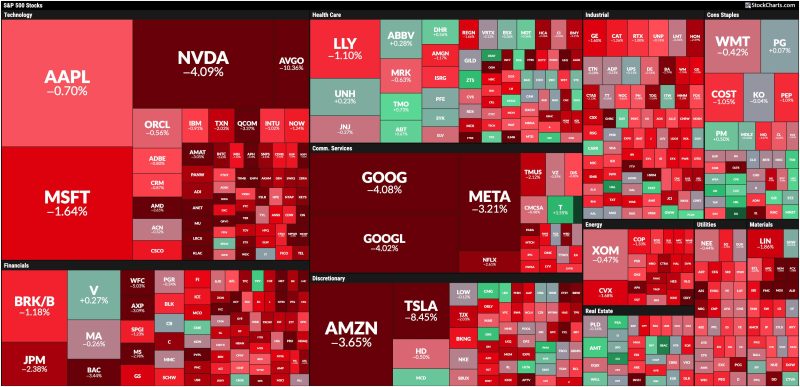Broad-Based Stock Market Selloff: How to Position Your Portfolio
Market selloffs are a natural part of the investment cycle and can provide opportunities for investors to reposition their portfolios for long-term success. When faced with a broad-based stock market selloff, it is essential to remain calm and make well-informed decisions to protect your investments and potentially take advantage of discounted prices.
1. Review Your Investment Strategy
The first step in positioning your portfolio during a market selloff is to review your investment strategy. Analyze your financial goals, risk tolerance, and time horizon to ensure that your portfolio allocation aligns with your objectives. Consider diversifying your holdings across different asset classes to reduce risk and enhance overall portfolio performance.
2. Focus on Quality Stocks
During a market selloff, it is crucial to focus on high-quality stocks with strong fundamentals. Look for companies with stable earnings growth, manageable debt levels, and a competitive advantage in their respective industries. Quality stocks tend to outperform during market downturns and provide a solid foundation for long-term wealth accumulation.
3. Consider Buying the Dip
Market selloffs often present buying opportunities for savvy investors. Consider dollar-cost averaging into the market by purchasing stocks at regular intervals to take advantage of lower prices. Keep in mind that timing the market is challenging, so focus on buying quality companies at attractive valuations rather than trying to predict short-term price movements.
4. Stay Diversified
Diversification is key to managing risk in your investment portfolio, especially during a market selloff. Spread your investments across different sectors, industries, and geographic regions to reduce the impact of market volatility on your overall portfolio performance. Maintaining a diversified portfolio can help cushion the impact of short-term market fluctuations and improve long-term returns.
5. Monitor Your Portfolio Regularly
During a market selloff, it is essential to monitor your portfolio regularly and make adjustments as needed. Rebalance your portfolio periodically to ensure that your asset allocation remains in line with your investment objectives. Stay informed about market developments and economic trends to make informed decisions about your investment strategy.
In conclusion, a broad-based stock market selloff can be a challenging time for investors, but it also presents opportunities to reposition your portfolio for long-term success. By reviewing your investment strategy, focusing on quality stocks, considering buying opportunities, staying diversified, and monitoring your portfolio regularly, you can navigate market downturns effectively and position your portfolio for growth. Remember to stay calm, stay informed, and stay focused on your long-term financial goals during market selloffs.






















